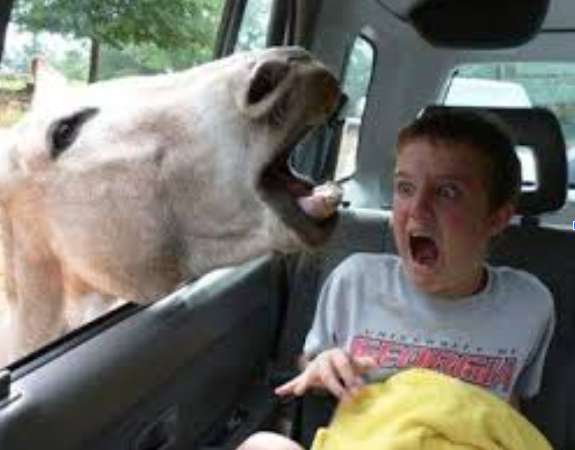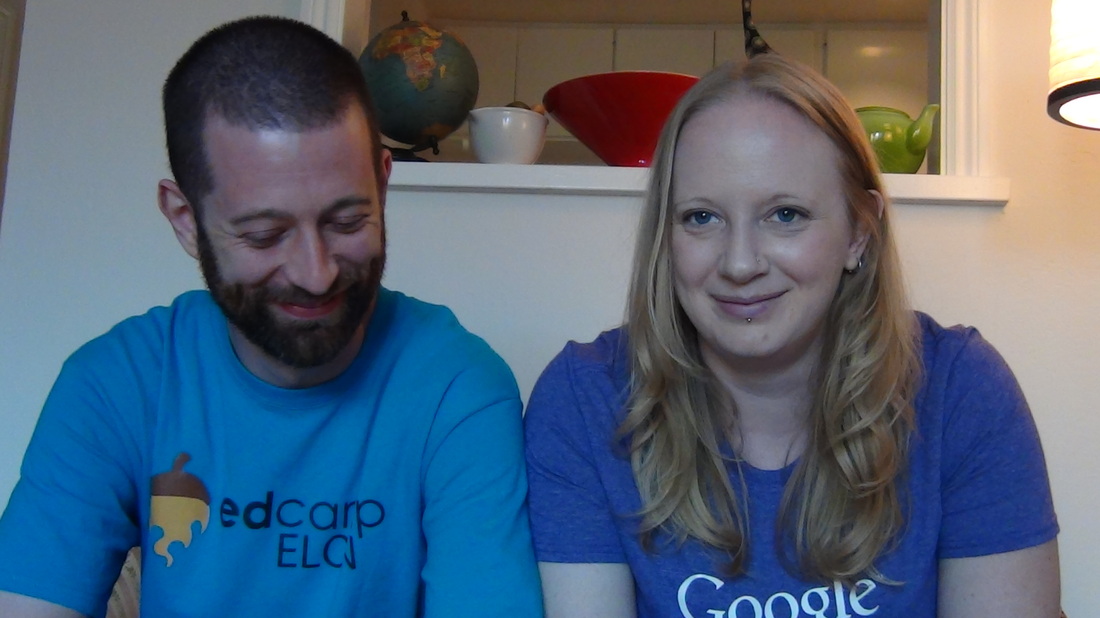The basics of the assignment: the format doesn't change, but the image students write about does. They brainstorm three nouns, verbs, adverbs, and adjectives about the picture. They write a paragraph using all of those words correctly. They write a simple three-word-sentence that has to include subject and predicate. They write a simile. They write three sentences using the conjunctions "but," "because," and "so."
In discussions with my students, I knew they weren't quite ready for all 8 parts at once, so I used a slightly modified version that I thought they could handle.
That helps me differentiate a bit - groups that really struggle on word generation are the ones I work with more closely, and groups that are able to fly through have extra sentences to help them practice their skills.
I started with this picture:
The second one I use (we only did this activity twice this week) is this one:
Some of my favourites were:
- The penguin is a dentist and is checking the orca's teeth
- The orca asked the penguin to help him retrieve a rotten fish from his stomach
- The penguin is a serial killer and this is mob justice at work
- It's a magic trick that the penguin and orca are in on together
It reminds me of Ze Frank's brainstorming strategy of writing down any ideas he has immediately about a topic and throwing them away, because if he can think of those quickly, they're probably cliched and not good fodder for creativity.
It also builds some foundation for the narrative writing we're doing in the next few weeks. Telling a more interesting story is a skill they have to practice.
Another element I added this year was the Guided Notes format I introduced last week for the four parts of speech (click here for a forced copy).
This is a multi-week lesson, so I expect to have to run through a few more times before it will get quicker. Adding the guided notes was absolutely helpful, as it not only gives them something concrete to look back on, but gives them a paragraph that shows how some words can be identical but their usage makes them different parts of speech (change being both a noun and a verb is the example we looked at).
I also made one more change that made a big difference in curbing some of the chaos that we've had in groups. I started rotating jobs when we changed tasks. So today, they did three things at their boards: an etymology activity, 8 pArts, and the Guided Notes. After we did consolidation, they'd go back to their seats, and the jobs would change. So every member of the three-person group did every job. By the end of class, kids actually commented on how quiet and productive it was. I'm going to continue with that as much as possible.
I also have started assigning the disengaged student to be the writer - it's something I did last year quite a bit, but I've held back this year to see who would step up when needed.
Next week, we take on the Storyteller's Hans My Hedgehog and the Grimm version Hans the Hedgehog. We are looking at how minor changes to the story change the entire focus and how the characters function within the story (in this case, the hero actually changes in the Storyteller version). We also continue with 8 pArts, and I'll introduce the last four parts of speech the week after, if all goes well.








 RSS Feed
RSS Feed
